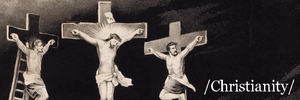>>11649
The Japanese have endured a great many attacks on their faith:
Until the nineteenth century worship of the kami was interwoven with rites associated with the Buddha and buddhas. Shinto and Buddhism were not two separate traditions. In the face of the forced opening of Japan to Western trade and influence in the mid-nineteenth century, however, a nativist movement clamoured for the creation of a distinctly Japanese cult. The Meiji state after 1868 undertook a nationwide “separation of kami and buddhas” (shinbutsu bunri). The Meiji government took control of the shrines thus “purified” of Buddhism and declared that “shrines of the kami are for the worship of the state."
By the mid-1870s, however, the Meiji government was under pressure both from Western powers and from educated Japanese elites who had studied in the West, such as Mori Arinori, later to be minister of education. In 1872, Arinori wrote a treatise in English declaring that the government’s “attempt to impose upon our people a religion of its creation cannot receive too severe condemnation.” In 1875, the government officially declared freedom of religion, provided that religion did not impede the acceptance of imperial proclamations. This qualification led to an official distinction between Shinto performed at government-sponsored shrines (shrine Shinto) and that performed elsewhere (sect Shinto). Sect Shinto was conceived of as a doctrine and was therefore defined as religion (shukyo, a technical term borrowed from Buddhist monastic practice meaning “group teaching” or “sect teaching”). Shrine Shinto was dedicated to the worship of the state and was not considered religion but “rites” (jinja). Belief in religious teachings was therefore a private matter of choice, but the performance of rituals for the state was a public duty. From the 1880s to World War II, official state rhetoric made a sharp distinction between Shinto and religion. Buddhism, Christianity, and other sects were religions, symptoms of selfishness and disunity. There was a movement, therefore, to classify all shrines of the kami as national shrines, to avoid the taint of religion.
The officially endorsed national cult of Shinto had gained such power in the early twentieth century that the victorious U.S. government moved immediately to remove shrine Shinto from public power at the end of World War II. At that time all government support of Shinto shrines, teachings, rituals, and institutions was expressly forbidden in order “to separate religion from the state, to prevent misuse of religion for political ends, and to put all religions, faiths, and creeds upon exactly the same legal basis.” After years of denying the religiosity of Shinto, priests and apologists found themselves suddenly defined as religious, limited by the very principle of freedom of religious belief which they had once overcome by defining themselves against religion.
The “secular” –“religious” divide is a complete fabrication based on a dynamic between centres of power that arose in the medieval period, but which is still in play - and any attempts at conversion must acknowledge and summarily dismiss this deceit.
